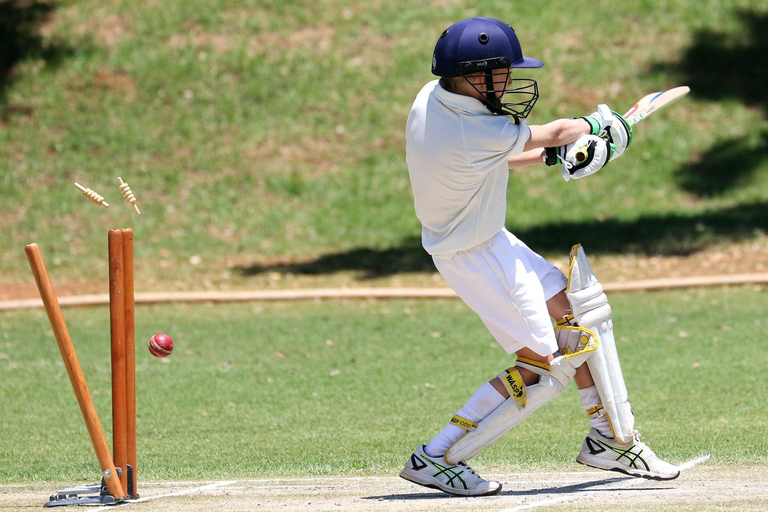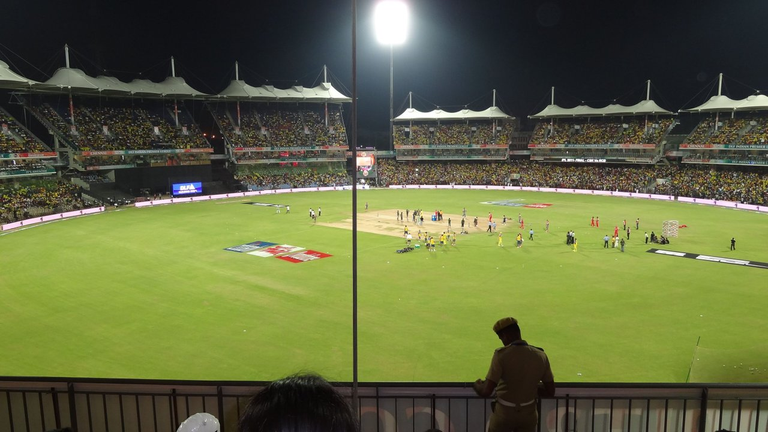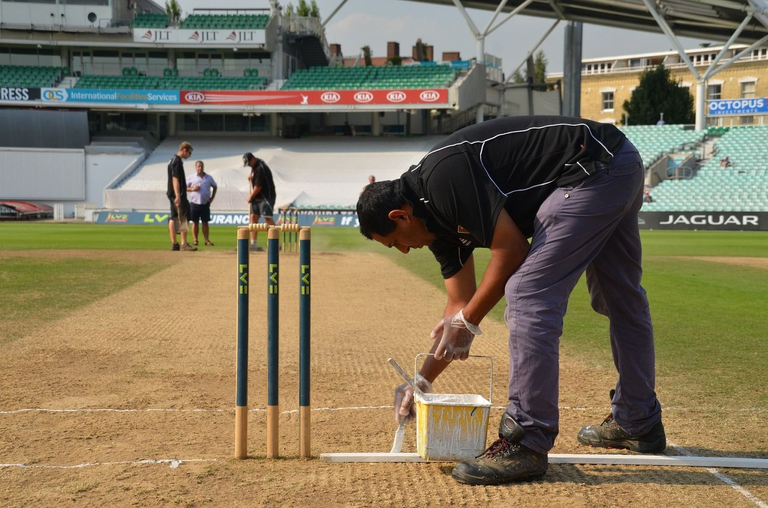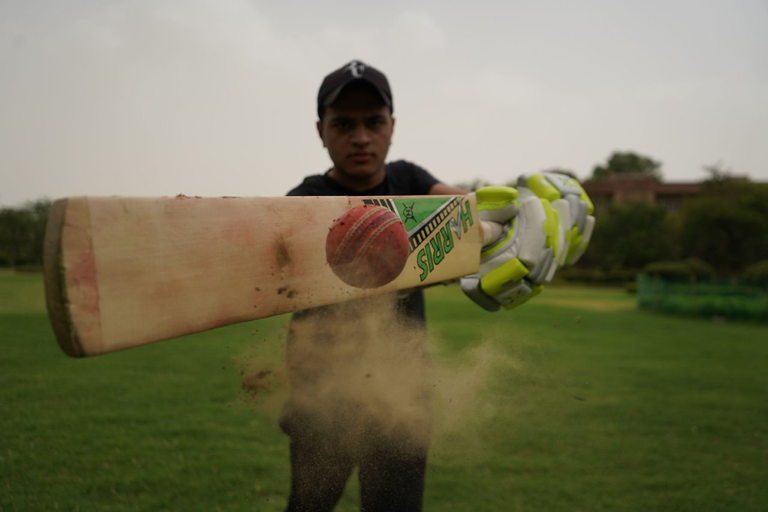
Photo by Patrick Case from Pexels
Cricket is one of the most popular sports games in the world. It's just behind Soccer/Football in no. of fans. Although Cricket is played in more than 100 countries, only a handful of countries play international matches. Some of the popular Cricket playing nations are India, England, Australia, Pakistan, Bangladesh, and New Zealand.
Did you know that the World Cup match between India and Pakistan in 2015 was estimated to be watched by more than 1 Billion people? source
This post will serve as the entry point in learning about Cricket who know nothing or very little about the game itself. Just keep in mind that I can't cover everything that Cricket has in one post or even in 10 posts. It's one of the most complex games with sometimes very confusing terminology and rules.
Did I say rules? Pardon me... Cricket unlike any other sport doesn't have rules, it has LAWS. The laws were formalized in the 18th century and have constantly been improved/revised to date.
Cricket Ground and Pitch

Image by Dhanasekaran Kasiappan from Pixabay
Cricket is played on an oval ground.
There are no fixed dimensions for the field but its diameter usually varies between 450 feet (137 m) and 500 feet (150 m) for men's cricket, and between 360 feet (110 m) and 420 feet (130 m) for women's cricket. source

Image by foxycoxy from Pixabay
Cricket Pitch is a rectangular strip (22 yards or 20.12 meters long) in the middle of the Cricket Field where most of the action happens. This surface is flat and normally doesn't have grass or has extremely short grass. Pitch conditions can change during the period of the match, some pitches are more helpful to batters, and some to bowlers. So, strategizing by observing and reading a pitch before the game is important.
Wickets
It is one of the two sets of three stumps and two bails at either end of the pitch.[1] The fielding team's players can hit the wicket with the ball in several ways to get a batsman out. source
Cricket Bat and Ball
 Image by Yogendra Singh from Pixabay
Image by Yogendra Singh from PixabayCricket Bat is used by the batter or batsman to hit the ball. It has a cane handle at the top which is attached to a flat-fronted willow-wood surface.
The length of the bat may be no more than 38 inches (96.5 cm) and the width no more than 4.25 inches (10.8 cm). source
Cricket Ball weighs between 5.5 to 5.75 ounces (155.8 to 163 grams), which is heavier and harder than a standard baseball. A fast-moving ball can be very dangerous and can easily injure players.
Teams
Cricket is played between two teams of 11 players each. These 11 players will be a mix of Batsmen (capable of hitting the ball far and better), Bowlers (specialized in bowling or pitching the ball to batsmen during a game), and all-rounders (with both batting and balling skills)
Gameplay

source
One team bats first and the other team fields, decided by a coin toss at the start. The batting team sends two batsmen to the field and they each stand on a different side of the pitch. The bowling or the fielding team tries to bowl them out while the batsmen try to score as many runs as they can before the innings end and the other team will bat and try to score more runs than the previous team to win the match.
One bowler bowls 6 balls in a row, which is called an "OVER" (assuming they are all legal.). Then another bowler bowls an over. No bowler can bowl two consecutive overs.
There are three different formats of the game (having different no. of overs per innings). One of the popular formats is called "One Day International" or "ODI" format where one inning is 50 overs or 300 balls.
So, the main crux of the game is that the batting team first tries to make the most of these 300 balls (in ODI format) to score the maximum runs that they can get while the bowling team wants to restrict them and tries to get them out. If the bowling team gets 10 wickets (outs) then the innings automatically ends there.
Ways in which a batsman can get out
Bowled
when the ball hits the wickets when bowling

source
Caught
when the fielder caught the ball on the full without any contact with the ground or going out of bounds.

source

source
Run-out
hitting the wickets before the batsmen can complete the run by getting to the other side of the pitch.

source
LBW(Leg Before Wicket)
when the ball hits the batsman's leg which otherwise would have gone to hit the wickets
Stumped
when the batsman gets out of the crease and the wicketkeeper dislodges the bails with the ball in hand.
Miscellaneous
- handling the ball: when the batsman uses their hands to stop the ball.
- intentionally getting in the way of the ball and wickets while running to stop the ball from hitting the wickets
- hit-wickets: when any part of the batsman's body or equipment touches the wicket and dislodges the stumps. A very poor way to get out.
And there are a few others as well, but they are much rarer and can't easily be explained here.
Ways to Score Runs
Running between the wickets

source
Each time a batsman hits the ball with the bat he/she will try to run to the other end of the pitch and the same will be done by the other batsman. If both batsmen exchange their position on the ground safely before the ball has been collected by a fielder and thrown back to the stumps, it counts as 1 run. Batsmen can take more than 1 run by running between the wickets. Each exchange counts as 1 run.
Hitting a Four

source
A batter can score 4 runs on a single ball if he/she hits the ball and the ball manages to cross the outer boundary of the field. 4 automatic runs will be added to the team score and the batter doesn't even have to run.
Hitting a Six

source
A "six" is when a batter hits the shots and the ball crossed the boundary line on the full without bouncing in the field. Like a home run. This shot adds 6 automatic runs to the total without running between the wickets.
Extra Runs
"Extras" as the name suggests are the extra/bonus runs that are awarded as a penalty to the batting team's score. Example - 1 extra run is given when the bowler bowls a "wide" (out of reach or batter) ball.
Simple...no?
A match can last from 3 hours (20 overs per innings) to 5 days (~ 90 overs per day). The most entertaining format of the match is the Twenty20 or 20-20 format, where viewers can see some fast gameplay and some big shots.
As I said before, cricket is one of the most complicated sports out there and may even confuse players at times. So, don't expect to get everything the first time after reading this. This post is only for understanding some basic concepts of the game which I wanted to let everyone know.
Cricket is not just a game. It's an emotion for many fans. I have been watching cricket all my life and it has given me some of the best memories of my life. I don't think any Indian will ever forget the 2007 World Cup Win again Pakistan in the last over. Nor the 2011 World Cup Winning Six by Indian Captain "MS Dhoni".
"Cricket is a Religion in India"
I will leave you with the "2011 World Cup" Winning six from the Indian Captain "MS Dhoni"

source
Which sports do you like the most? Have you ever watched a Cricket Match? Or did you even know about Cricket as a sport?LOL...I hope not. Let me know in the comments.
Note that all the content on this post is mine unless otherwise stated